Who knew that growing your own fresh herbs while indoor gardening at home could be easy? Hydroponic herbs grow faster and taste better too!
Setting up a hydroponic herb garden requires knowledge, dedication, and specific tools including an air pump, water tank, and hydroponic nutrient solutions.
Cultivating different variety of herbs is achievable for anyone, and does not demand a significant amount of space!
This article offers details on various types of herbs suitable for hydroponic cultivation, as well as suggestions to have better-tasting herbs!
- Related article: What Hydroponic Plant is Easy to Grow
We have created a list of seven commonly grown herbs that thrive in hydroponic herb gardening!
1. Basil
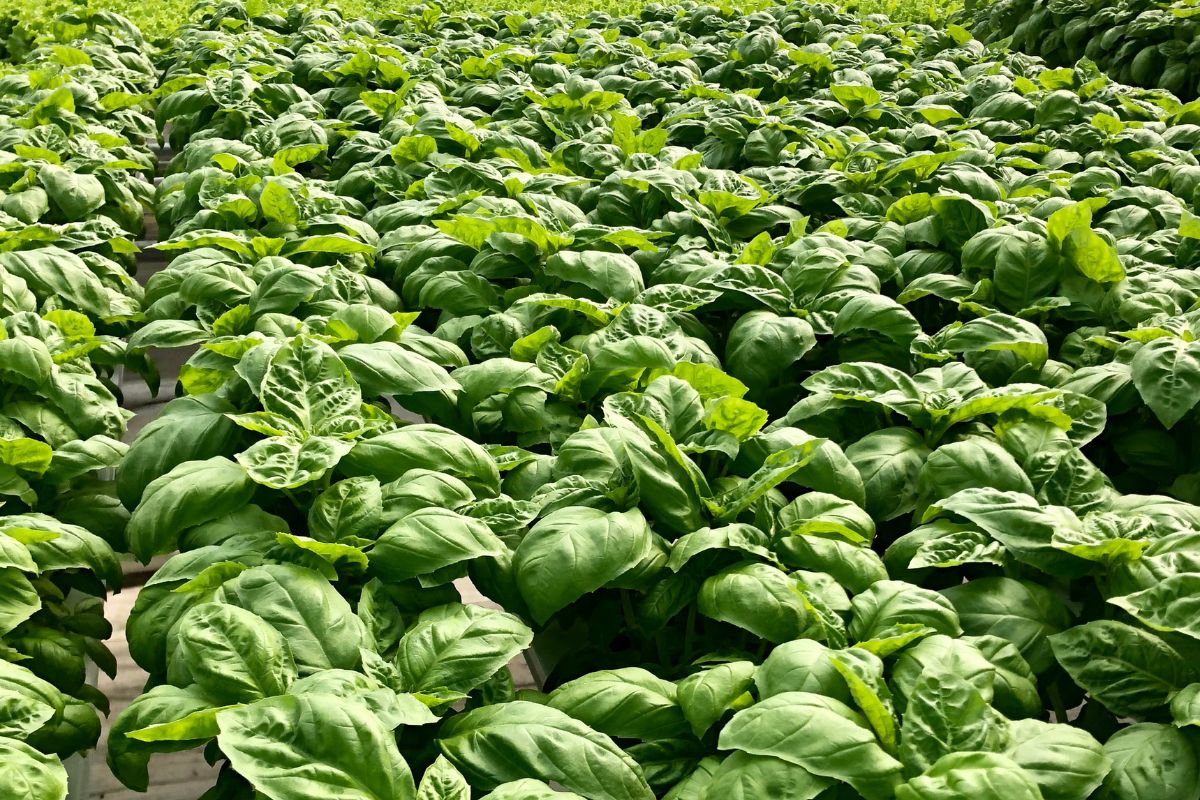
Basil is a widely cultivated hydroponic herb that is popular worldwide. It’s known for its rich flavor and aromatic properties.
If you are under the impression that there’s only one type of basil that is grown, you’d be mistaken.
There are multiple varieties of basil that are hydroponically grown—from Sweet Basil to Thai Basil, there is even a spicier flavored basil plant.
Revolutionize your gardening game with the groundbreaking discovery that all basil plants thrive in hydroponic growing systems!
Learn more about How to Grow Basil Hydroponically.
How Long Does it Take to Grow?
The basil plant’s leaves are the primary yield of a hydroponic basil plant.
Basil grows rapidly, like most leafy green plants, and its leaves can be harvested within 4 weeks from seeds.
To ensure that your hydroponic basil reproduces leaves, it’s advised to leave the plant for about 6 weeks, before any official harvesting is done.
This will provide the rooting system of a basil plant with sufficient time to develop.
Temperature and pH levels
Basil plants enjoy natural light. In a hydroponic system, the minimum daily amount should be between 14-18 hours of sunlight.
If you’re growing basil in an indoor hydroponic system, keep the air temperature between 65°F-70°F.
High temperatures within a hydroponic system can lead to bitterness in basil leaves and crop damage.
Outdoor hydroponic basil is impacted by seasonal changes and will enter dormancy if exposed to temperatures below 65°F.
Discover the key to growing basil so perfectly, it’ll make your taste buds dance! Keep the pH level between 5.8-6.2 and watch as your plants soak up all the juicy nutrients they need through the water.
Best Hydroponic System for Growing Basil
Basil is a viable plant for hydroponics because of its versatility in growing within different hydroponic systems and its extensive root system.
The Deep Water Culture (DWC) and Nutrient Film Technique (NFT) are commonly utilized for commercial hydroponic basil cultivation.
The Deep Water Culture system is probably the simplest hydroponic system to use. Growing delicious basil plants doesn’t necessitate excessive equipment or vast growing spaces.
2. Thyme
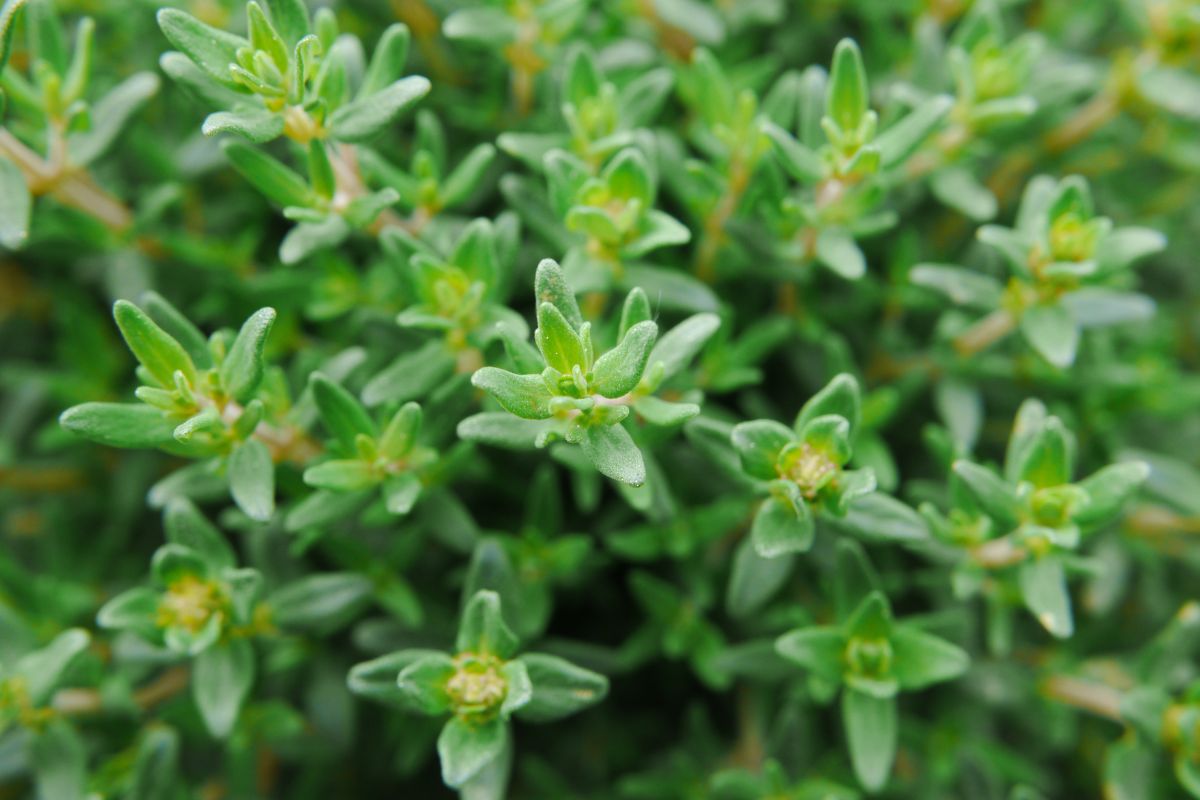
Thyme can be grown hydroponically using either herb seedlings or cuttings, and it requires 6-8 hours of natural sunlight daily.
This leafy herb has the potential to positively affect your hydroponic garden due to its strong aroma emissions.
How Long Does it Take to Grow?
Hydroponic cultivation yields faster growth of thyme in comparison to traditional soil-based cultivation. The germination process for thyme seedlings usually lasts for one to two weeks.
The growth cycle of thyme typically lasts 4-6 weeks until its leaves and stems are ready for harvesting.
It is important to leave some stems when harvesting plants to allow for regrowth.
Thyme is a perennial herb that can have a lifespan of 5 years when grown hydroponically. This herb is great for longevity.
Temperature and pH levels
All herbs grow well at a temperature of 65°F-70°F— thyme is no different and doesn’t do well in colder environments.
Maintain a moderate temperature in your hydroponic system to avoid the slow growth of thyme plants.
The optimal pH range for thyme growth in a hydroponic system is 5.5-7.0.
Best Hydroponic System for Growing Thyme
The best types of hydroponics systems for growing thyme are dependent on the grower, and each hydronic system has its own advantages.
The Wicking System is relatively simple and won’t require much equipment.
Although the system is generally for small-scale hydroponics, it’s an affordable system to use, should you only want to grow a couple of thyme plants.
The Deep Water Culture system is an alternative hydroponic system for a larger-scale thyme cultivator to consider.
3. Mint
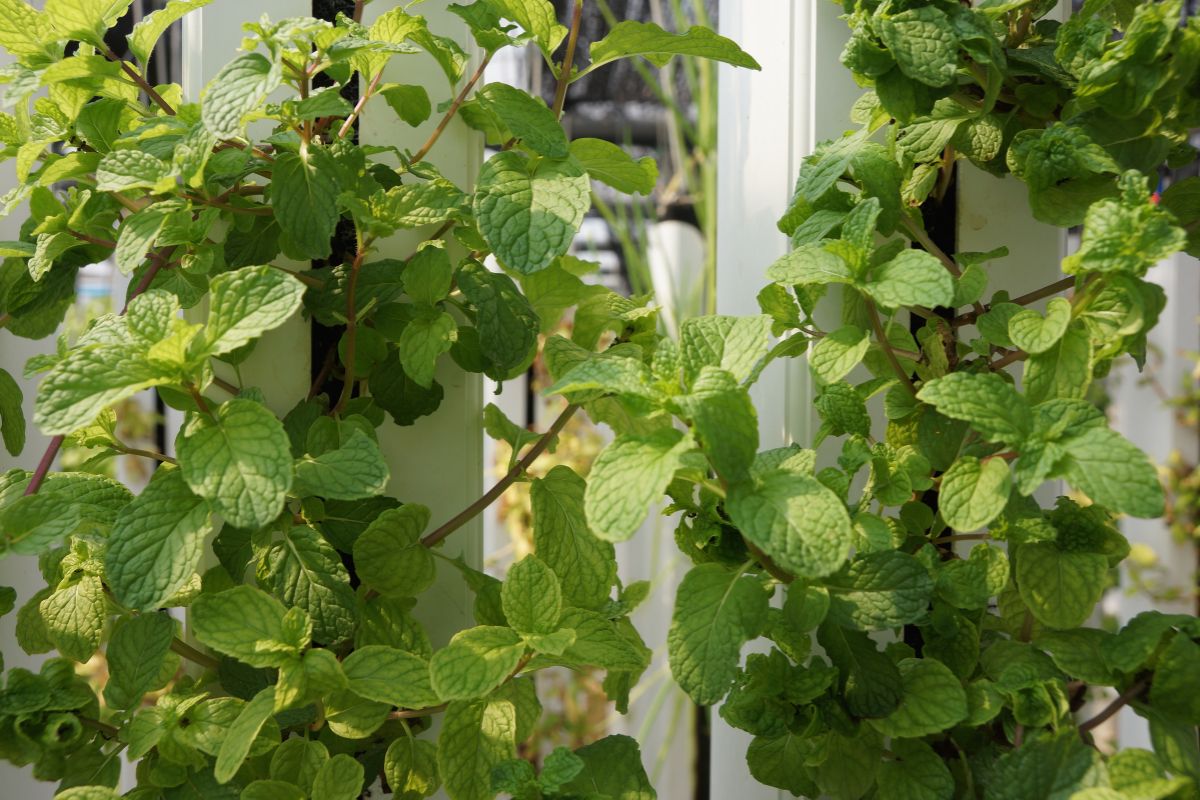
The overpowering aroma of a Mint plant can’t be missed as you walk through a garden.
Mint provides essential medicinal properties that have been extracted throughout the century.
This herb grows so effectively in hydroponics, you will never run dry.
How Long Does it Take to Grow?
The mint can be harvested soon without much waiting.
Mint can be harvested within 2-4 weeks as it grows from its roots.
However, try to refrain from harvesting your mint plants within the first 4 weeks as this will allow the rooting system to properly develop.
Remember that mint will grow back after it’s been cut, so when harvesting the plant, don’t cut or pull out its roots.
Temperature and pH levels
Consistent light, sunshine, and lots of it—mint needs between 12-16 hours of direct sunlight per day to thrive in a hydroponic setup.
Mint grows well in cooler temperatures and has difficulty in heat. The temperature range recommended for hydroponic mint cultivation is between 55℉-70℉.
The secret to flourishing mint in your hydroponic setup is a pH level of 5.5 to 6.0.
Best Hydroponic System for Growing Mint
Mint leaves sprout from their roots, and they require substantial space to spread their roots.
The best hydroponic growing systems that support a mint plant are the Nutrient Film Technique (NFT) and the Ebb and Flow system.
The NFT technique is particularly beneficial to growing mint as this technique provides a constant flow of nutrients to plants. It’s the best method for ensuring plant density and requires minimal labor.
Mint plants are well suited to this technique as they have the tendency to outgrow their growing pods and take over hydroponic systems.
4. Rosemary
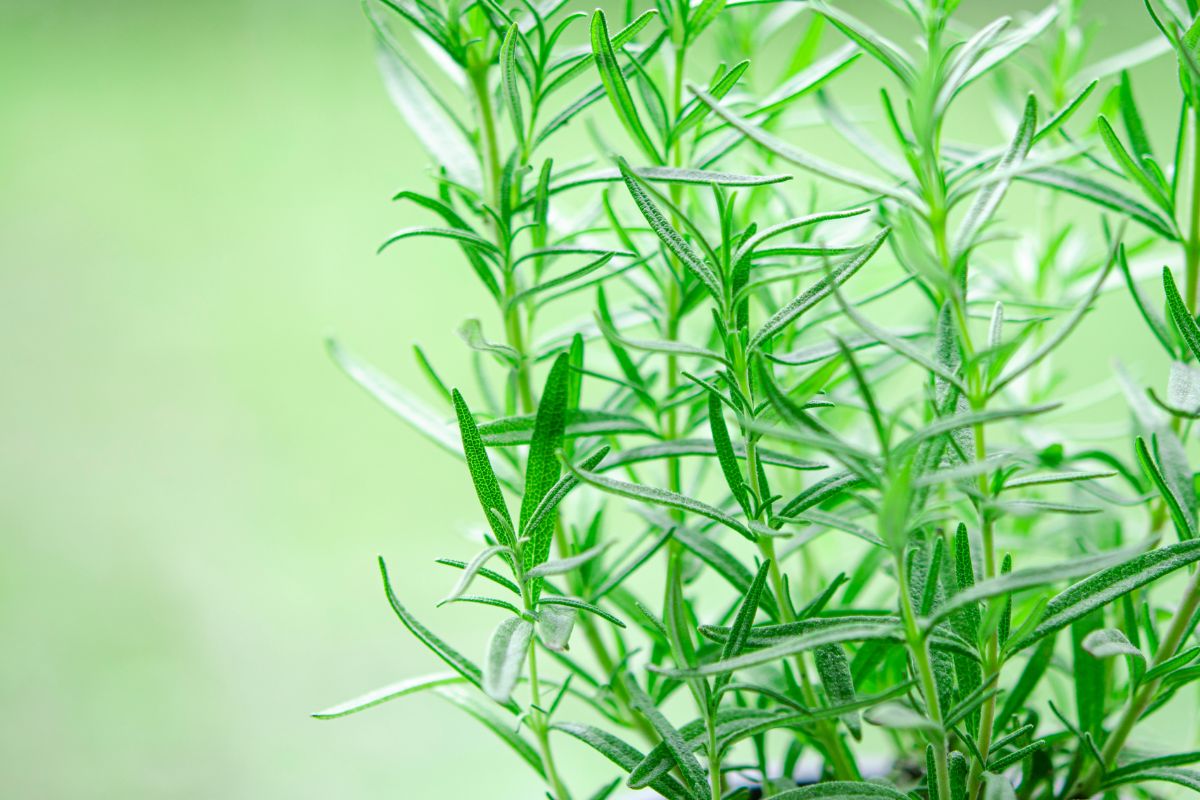
Rosemary is a secret ingredient—believed to improve memory support and has long-term health benefits.
Experience the magic of hydroponics and witness your rosemary flourish with faster growth rates!
How Long Does it Take to Grow?
The rosemary plant grows at a slower pace compared to other herbs.
Rosemary plants require a growth period of approximately 10-12 weeks from seed before their stems and leaves can be harvested.
When harvesting a rosemary plant, simply cut or break off the leaves from the stems. Don’t harvest the entire plant, leave some stems and leaves, so it will be able to rejuvenate faster.
Temperature and pH levels
Naturally, rosemary is a Mediterranean species of plant. The plant requires long hours of constant sunshine.
An indoor hydroponic system will need to provide over 11 hours of artificial light exposure for rosemary plants.
Rosemary thrives in a balmy sweet spot between 75°F and 84°F—the perfect climate for this fragrant herb to flourish!
Maintaining a pH level of 5.5-6.0 in water is recommended to promote optimal nutrient absorption.
Best Hydroponic System for Growing Rosemary
Rosemary is prone to root rot, and the best hydroponic system for growing rosemary is the Ebb and Flow technique.
This technique submerges the rosemary plant’s roots in nutrients and then drains the remaining nutrient water from the channels.
This allows sufficient time for the roots to absorb sufficient nutrients without being permanently submerged in water.
5. Oregano
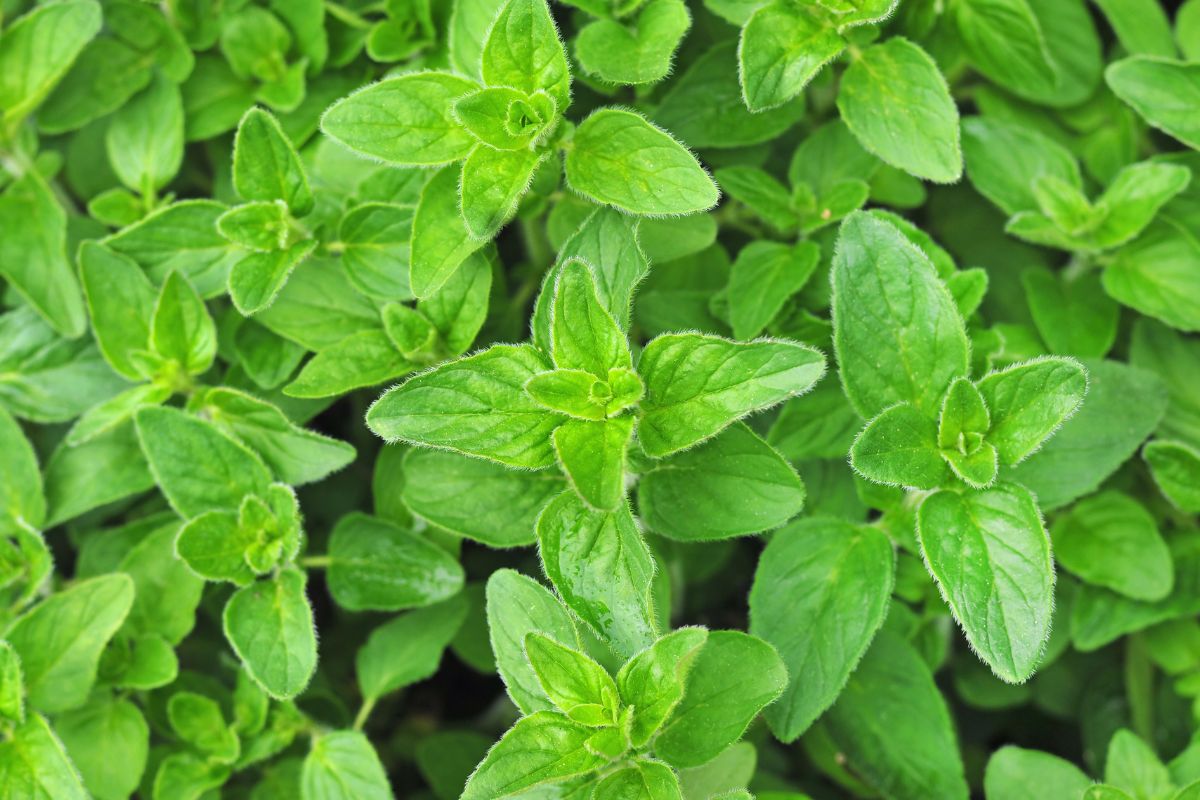
Oregano is known for being a slow-growing herb bush globally. Despite this, its distinct flavor and medicinal benefits make it a valuable choice.
To optimize efficiency, cultivate oregano using a hydroponic system and expose it to 18 hours under grow lights per day.
How Long Does it Take to Grow?
Watch Oregano grow at its own pace! Depending on its growing conditions, this flavorful herb can take anywhere from 12-16 weeks (or even longer) to reach its full potential.
Utilizing oregano stem cuttings from mature plants can expedite the process and lead to a 50% reduction in wait time.
Temperature and pH levels
The best temperature to grow oregano is between 70°F-75°F.
The plant appears to tolerate lower temperatures without any issues.
Unlock the full potential of your hydroponic setup with the ideal pH range of 6.0-7.0 for your water!
Best Hydroponic System for Growing Oregano
Any hydroponic system will work for growing oregano, but the most excellent choice is a drier technique such as the Drip Technique or the Ebb and Flow system.
Oregano grows better when it’s not constantly submerged in a nutrient solution. The Drip technique provides a continuous supply of nutrients to the plant while avoiding the saturation of the roots in water.
6. Cilantro
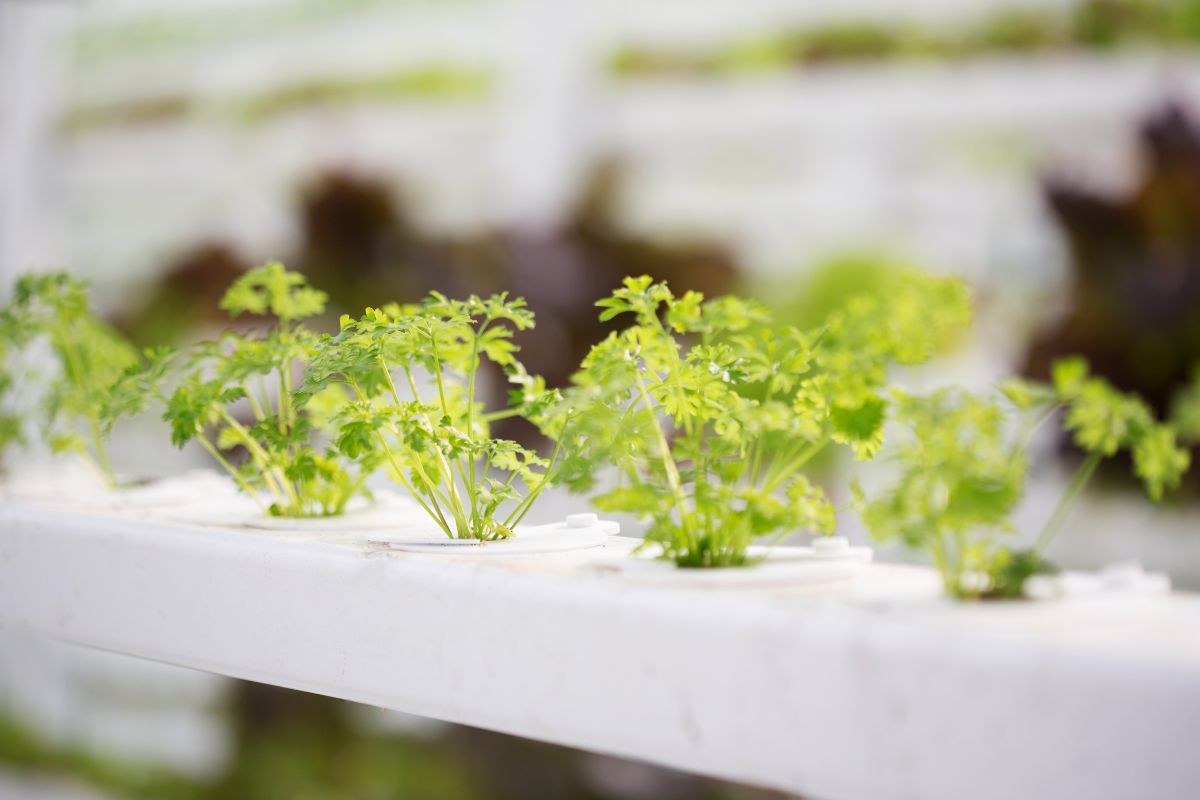
Introducing the plant with a dual personality—Cilantro, also known as Coriander! Its leaves go by the name Cilantro, while its seeds answer to Coriander.
Growing it does not necessitate extensive areas. You can grow hydroponic cilantro in relatively small confined spaces.
Cilantro requires a substantial amount of natural sunlight, up to 12 hours daily.
How Long Does it Take to Grow?
In just a mere 6-8 weeks, cilantro springs to life from its humble seed beginnings, ready to be plucked and sprinkled onto your favorite dishes!
Temperature and pH levels
Cilantro grows well in a variety of temperatures, but it does best in cooler climates ranging from 45°F to 70°F.
The recommended pH range for a hydroponic system’s water levels is 6.0-6.5.
Best Hydroponic System for Growing Cilantro
The preferred hydroponic systems used to commercially grow cilantro are the NFT, Drip Technique, Ebb and Flow, and DWC Systems.
Cilantro can be grown with relatively any hydroponic system, and the best system is dependent on the grower’s needs and budget.
7. Sage
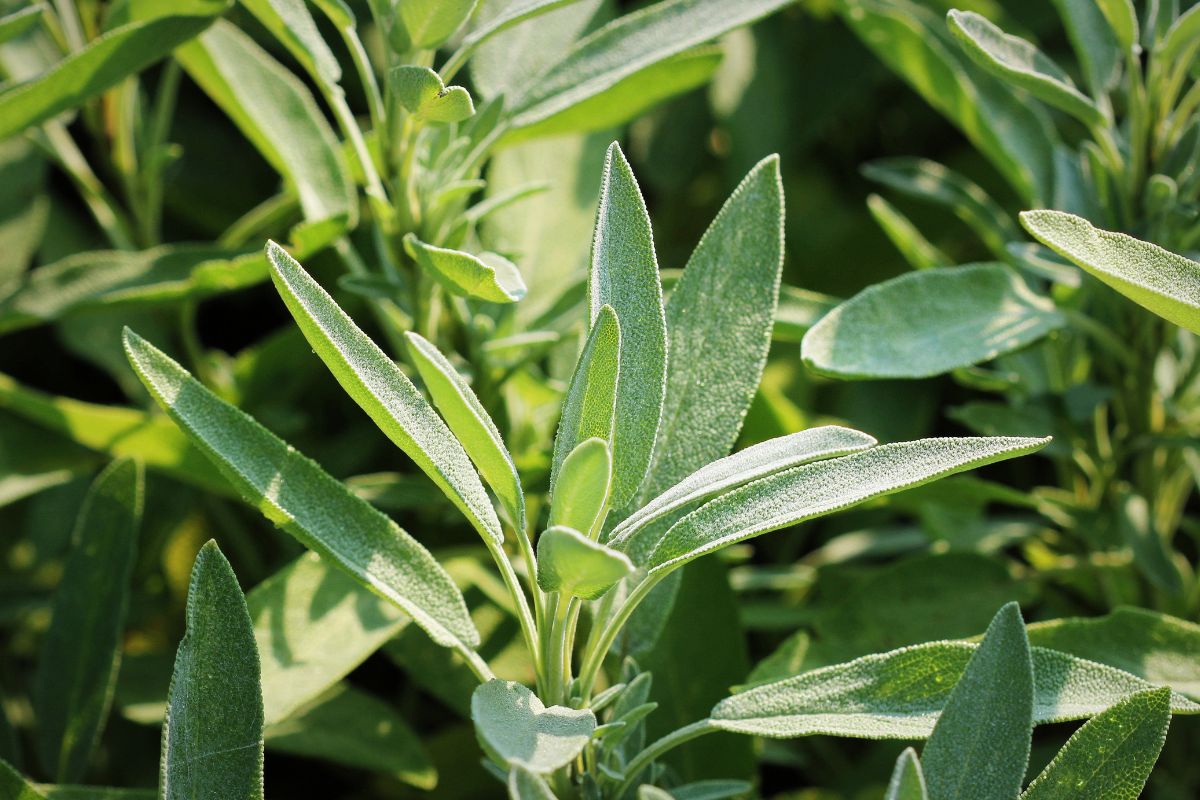
Sage is a commonly cultivated medicinal herb grown hydroponically worldwide and is highly regarded.
Unlock the full healing potential of this herb by growing it in a hydroponic system!
How Long Does it Take to Grow?
Watch as Sage springs to life from a tiny seedling, taking 4-6 weeks to germinate and 2 years to blossom into a mature plant!
Using stem cuttings from adult sage plants is recommended to expedite the process.
Temperature and pH levels
Sage needs sufficient natural light, nutrients, and oxygen to thrive in a hydroponic system.
Sage thrives in hydroponic systems when the temperature is just right—think cozy and warm between 75°F and 85°F!
The secret to flourishing Sage is hydroponic growing in water that’s a tad acidic (think 5.5-6.0). Get ready to watch your sage soar!
Best Hydroponic System for Growing Sage
Sage is commonly grown in several hydroponic systems such as the DWC, Kratky, and Ebb and Flow hydroponic systems.
For commercial cultivation of sage, the NFT and Aeroponic Systems offer the best-growing system.
Aeroponics doesn’t require any growing mediums and is the recommended hydroponic system to use.
Final Thoughts on Growing Herbs Hydroponically
Hydroponic farming has revolutionized the way avid gardeners grow everyone’s favorite herbs.
Hydroponic systems prioritize plant health and quality to maximize growth and produce aromatic herbs with higher yields and superior flavor.
Culinary herbs can be produced with superior quality and without contaminants such as pesticides through environmental control by growers.
Hydroponic gardening offers advantages such as increased efficiency, water preservation, and the ability to harvest fresh herbs throughout the year.
Hydroponic herb gardens, which prioritize sustainability and innovation, hold considerable promise for the future of agriculture!
Check out these articles to know more about growing different types of plants hydroponically in your indoor garden:








